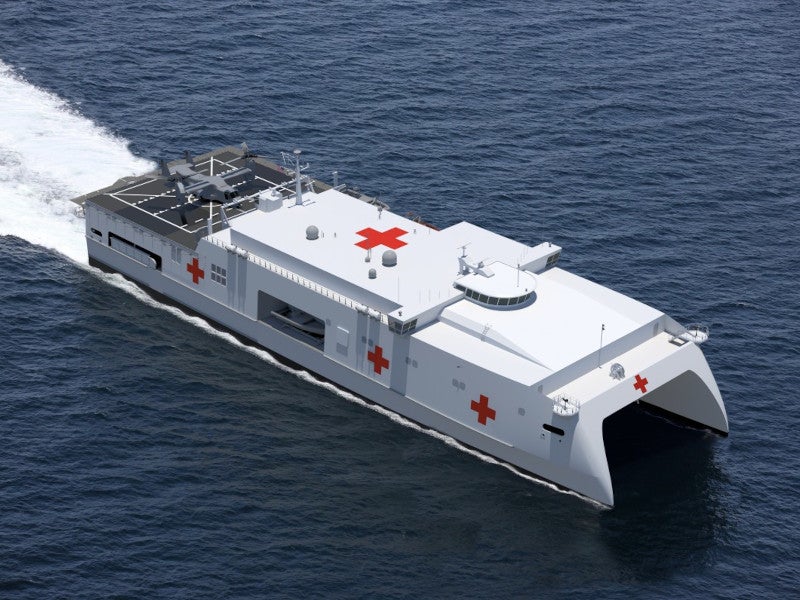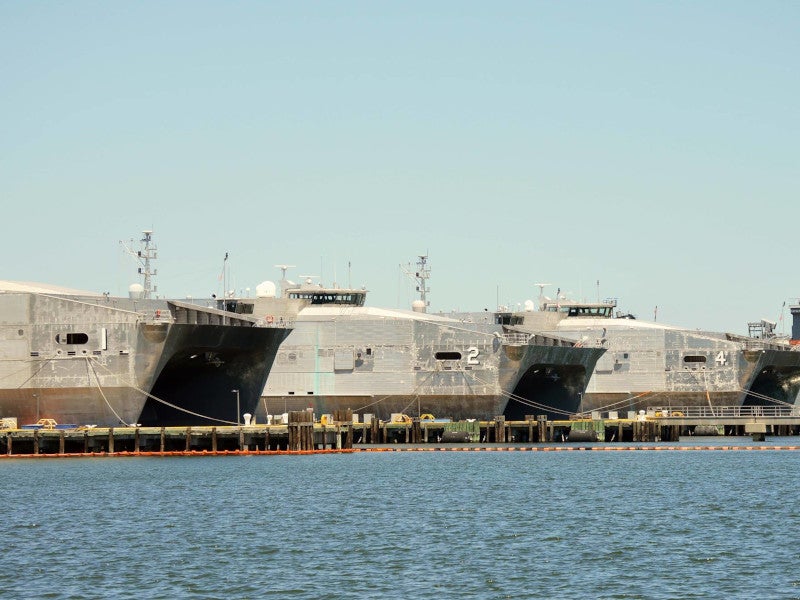The Bethesda-class Expeditionary Medical Ship (EMS) is a new class of medical ships being constructed by Austal USA, a subsidiary of the Australian shipbuilder Austal, for the US Navy.
The primary function of the ships is to offer swift, high-level medical care at sea and in coastal areas, including hospital-level critical care, humanitarian aid, disaster response, evacuation of non-combatants, and support for special operations.
The new class of ships was named Bethesda-class EMS and the lead ship was named USNS Bethesda in May 2023 while its naming ceremony took place in January 2024. The second ship was named USNS Balboa in October 2023.
In December 2023, Austal USA was awarded a contract valued at A$1.28bn ($867.6m) for the final design and construction of three EMSs by the US Navy.
Design and specifications
The design of the Bethesda-class EMS is based on Austal’s Expeditionary Fast Transport (EPF) ship. The vessel will be constructed on the company’s aluminium manufacturing line after the completion of the last EPF 16.
The EMS will feature a catamaran hull and will be 361ft in length. It will have a beam of 103ft and a draft of 15ft.
The ship will be capable of reaching speeds of more than 18 knots with a range exceeding 5,000 nautical miles when fully loaded and maintaining 15 knots in Sea State 5.
The shallow draft of the EMS will allow for greater accessibility to austere ports and offload sites, thereby enhancing the ship’s reach.
Furthermore, the ship’s manoeuvrability enables it to dock in smaller, shallower ports, increasing the number of patients that can be reached and treated.
Facilities onboard Bethesda-class expeditionary medical ships
The EMS will have a single-deck layout optimised for the flow of trauma patients and provide a Role 2E level of care. It will accommodate a crew, medical detachment, and aviation detachment totalling 223 personnel.
The ships will include 34 acute care beds, six acute isolation beds, 14 intensive care unit (ICU) beds, six ICU isolation beds, 12 recovery beds, and three operating rooms, in addition to seating for 170.
It will also feature a large flight deck capable of handling military aircraft such as the V-22 Osprey combat aircraft, CH-53K heavy-lift cargo helicopter and H-60 military helicopter, apart from a hangar and service facilities for H-60-sized aircraft.
Furthermore, the ship will be capable of conducting boat operations with two 11m rigid-hulled inflatable boats for patient transfer and recovery from water.
Capabilities and missions
The Bethesda-class expeditionary medical ships will be purpose-built to provide diagnostic, specialist, and hospital care in support of distributed maritime operations (DMO).
The ships will offer a comprehensive range of medical services, including triage, critical care, surgical facilities, medical labs, radiology, blood banks, dental care, mental health services, obstetrics and gynaecology, primary care, rapid stabilisation, evacuation of casualties, and combat search and rescue, including at-sea recovery.
The EMS’ high-speed capability and design will be tailored for personnel recovery from damaged ships at sea and rapid patient transport operations, which is a vital function in potential maritime engagements under the DMO concept.
The ships will be equipped to support forward-deployed forces across a full spectrum of operations, including combat support while also offering assistance to allies and partners.
They will be engineered to deliver medical care more quickly than its predecessors, the USNS Mercy and USNS Comfort.










